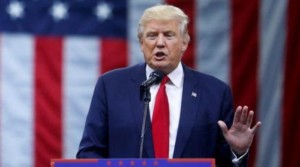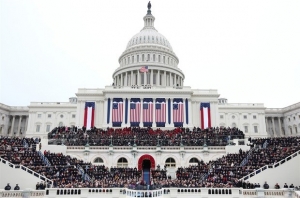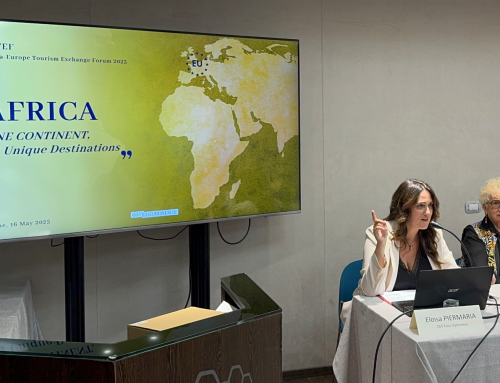 Rome, 19th January 2017: formalities, even when referring to institutions, may be grouped together by three main areas worldwide: the Occidental, the Oriental and the Islamic area.
Rome, 19th January 2017: formalities, even when referring to institutions, may be grouped together by three main areas worldwide: the Occidental, the Oriental and the Islamic area.
Within each area there is, moreover, further specificity. As such, in the Occidental world we may identify a Catholic, a Protestant and a South American area.
The differences in ritual among each area also fully evident during the most significant institutional events, such as the ceremony of inauguration of Heads of States, acquiring, in this case, a symbolic value.
The formal act of inauguration is common to all contexts: it consists, in fact, in a oath. Its practice, though, varies. There are differences in the formulas, environment, symbolic object, witnesses, guests, public and more features.
On 20th January 2017 Donal Trump will celebrate its inauguration as new President of the United States of America.
Before the adoption of the 20th Amendment of the Constitution (1933), which set the date of the inauguration on January 20th, the oath date was March 4th, the anniversary of the entry into force of the Constitution. The oath is required by article II, section 1, clause 8 of the US Constitution, quoting: “Before he enter on the execution of his office, he shall take the following Oath of Affirmation:
“I do solemnly swear (or affirm) that I will faithfully execute the Office of President of the United States, and will to the best of my Ability, preserve, protect and defend the Constitution of the United States.” So help me God (sentence added by Barack Obama, as by others in the past).
The oath formula is administered by the Chief Justice of the Supreme Court (or other member of the judiciary system in case the Chief Justice is not available) and repeated, word by word, by the incoming President. The two witnesses are not necessary in the US, while they are essential in Italy (where the witnesses are usually the Heads of the two Chambers of Parliament).
In 2009, the judge who was reading the formula made a mistake, leading Obama to make the same error, so that the President had to repeat the oath the following day, at the White House, to avoid any possible illegitimacy.
There is no written rule binding the President to make a oath upon the Bible, each President decides it autonomously.
Roosvelt swore without any text, Adams swore upon a law book containing the constitution, Lyndon Johnson swore on a Catholic missal. During the second oath of Obama in 2009, the one that was formally valid, no text was used. During the first one, instead, he had sworn upon the same Bible upon which Lincoln had sworn in 1861, which had never been reused before. In 2013, at the beginning of his second term, Obama made a oath upon the Bible pertaining to his wife’s family. Even in 2013, though, Obama had to swear twice, because the 20th January was a Sunday, so the public ceremony on the Capitol Hill terrace took place on the following day, with a new oath, this time even on two Bibles: Lincoln’s and Martin Luther King’s.
Some presidents, in making their oath, had their Bible opened on specific texts, some others left it closed. The oath is followed by 4 drum rolls, fanfare and the anthem, followed by 21 volleys of howitzer. During the ceremony, a religious blessing may be given, with the reading of a ritual prayer. Obama was accompanied by a Baptist Pastor of a Church near the White House.
Sometimes the ceremony is followed by music or poetry reading. Then, there is the Inaugural Address, highly awaited.
The Armed Forces, of which the President is the Commander-in-Chief, also take part in the event. The presidential parade follows, from the Capitol Hill to the White House.
The following day a religious ceremony is celebrated in the Cathedral of Saints Peter and Paul.
To financially support the whole ceremony, a committee is established to raise funds for the organization of the ceremony. The inauguration day is a holiday in the District of Columbia, in order to increase the number of participants in the ceremony and to relieve traffic congestion.
Among all oaths, the most enduring image is Lyndon Johnson swearing on board of the aircraft carrying the remains of President Kennedy. He has a look of contrition, his left hand on the open Bible and his right hand raised. He repeats the formula administered by a judge called in a rush, with Kennedy’s widow sitting next to him in dismay.
 What common features and which differences are there between the US setting, described above, and ours?
What common features and which differences are there between the US setting, described above, and ours?
First of all, in both legal systems the oath is the juridical condition for the execution of the office of president. Consequently, both in Italy and the US the elected becomes president at the moment of the oath of affirmation. The two constitutions actually sound the same when stating that: before entering his office (in the US) or functions (in Italy) the President must make a oath.
On the other hand, though, Italian presidents cannot swear upon religious texts, due to the lay nature of the State. Neither religious quotes nor invocations are accepted. Nor even the blessing of the ceremony by a priest, or the liturgical celebration of the following day. All these moments would not be possible in Italy, since they would undermine the lay nature of the event.
Such differences between Italy and the USA date back in history. The secular state, indeed, was established by the legal system only after the fall of the European absolutist regimes, therefore it is a value in the European system but not in America. The establishment of the secular state expresses in Europe the moment of revenge against the divinization of the monarchy, where the king has absolute power for God’s will.
Thus, European democracies support the secular state as opposed to the preceding institutional fundamentalism, which did not actually exist in America, where in fact the Presidents of the United States usually still make a oath upon the Bible.
Moreover, the colonists arrive on the American land because they are persecuted in their homeland for professing a non-conformist religion, so they are in the new land exactly for professing their beliefs freely. This results, however, in the proliferation of religions in opposition to one another. The Constitution (1787) at article 6, and the first amendment (1791), although establishing freedom of religion, are not able to reduce the harsh opposition. This determines a close tie between each American and their religious beliefs.
In the XX century, in the States there is a new reason to promote religion: the rise of the atheistic and materialistic communism, that is identified not only with a political and economical enemy but also with a spiritual and moral threat.
In conclusion, in the United States there is no such a clear separation between political and religious values as in Europe. The US citizens’ faith is quite simple: it has been said that God is not transcendent, but rather a companion in one’s route, often justifying wordly and material actions, if not even amoral acts. A justifying setting that, rather than looking at the future and the afterlife, focuses on here and now.
On the other hand, even the United States’ Catholic Church gives more importance to deeds and civil morals than to spirituality.
Since US citizens believe they must declare themselves believers of some kind of faith, they end up creating a larger number of religious sects than in any other part of the world, saturating the lay ideological spaces. All this justifies the presence of the Bible in the oath ceremony.
Moreover, as a further difference, we find the minor issue of the funding of the ceremony, which the US culture does not allow to be charged to taxpayers, while this is totally natural in Italy. This marks indeed a significant difference in style.
Last difference: the holiday established on the day of the inauguration (though limited to Columbia) would be inconceivable in Italy.
Massimo Sgrelli





